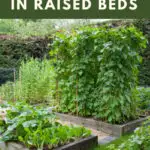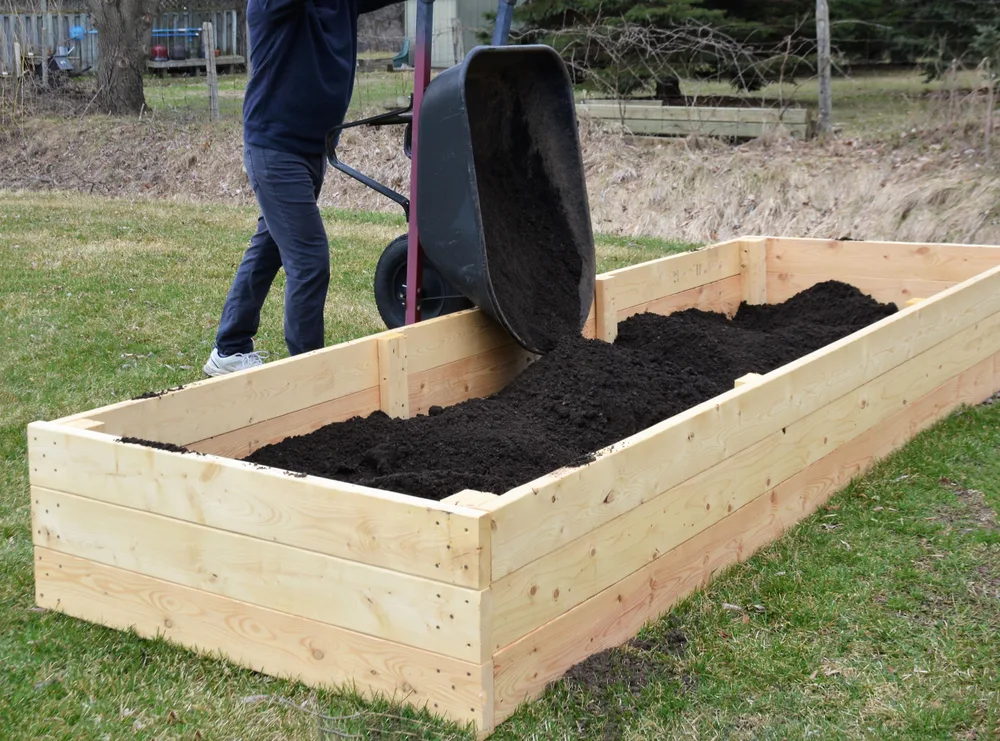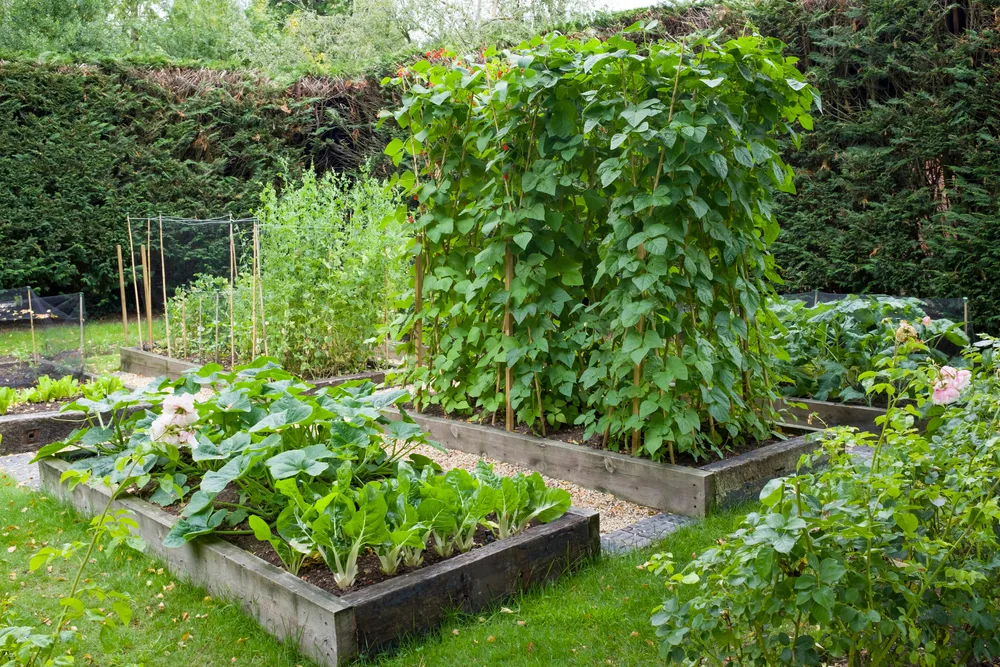
Gardening “up” instead of “down” in raised beds simply means the growing medium is elevated above ground level.
At its most basic, raised gardening can be achieved by mounding up the soil by several inches in existing garden beds or hilling up rows before adding plants.
Hügelkultur is another approach for raising up the soil without a frame.
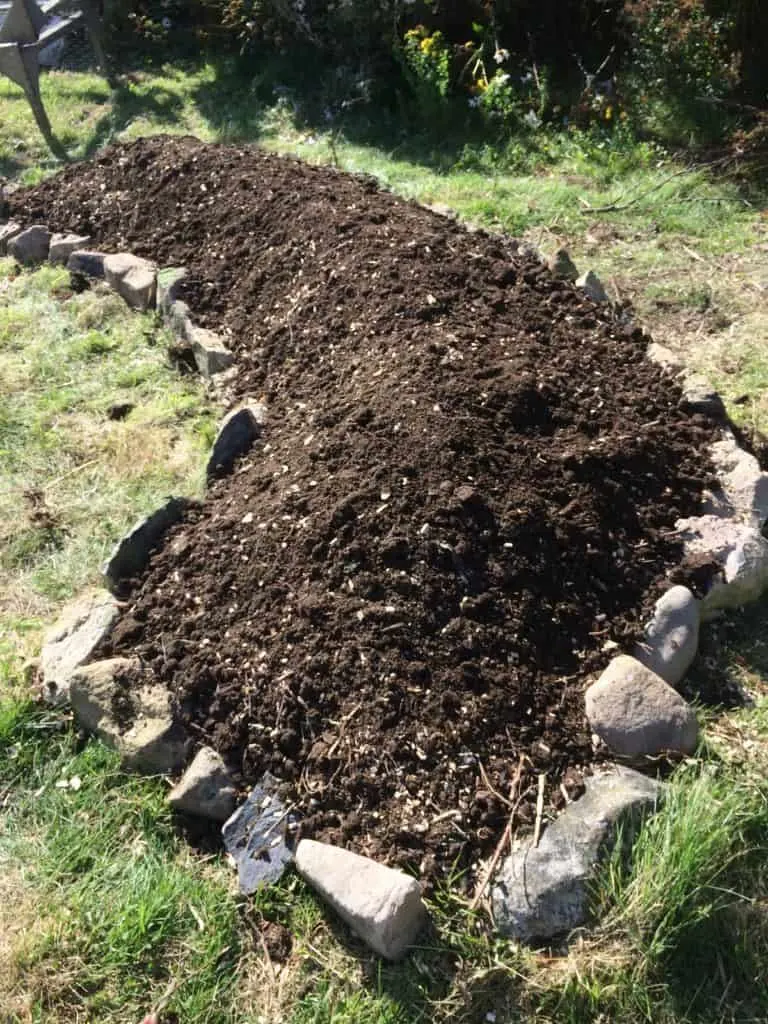
To get the benefits of raised beds, most of the plant’s root system will need to grow above the soil line.
Building a growing box with retaining walls keeps the soil “up” and in place year over year.
These semi-permanent enclosures can be built from wood, metal, stone, brick, concrete blocks, and many other materials you may have around the home. If you don’t have the time or energy to DIY, raised bed kits are complete and only need to be assembled.
Growing crops in raised beds is an elegant solution for many of the challenges that arise in the garden. And it definitely has a few distinct advantages over traditional in-ground garden plots.
There’s a reason raised bed vegetable gardens are so enduring and popular. Let’s count the ways raising up your soil is better for growing food and gardener alike.
1. Superior Soil Quality
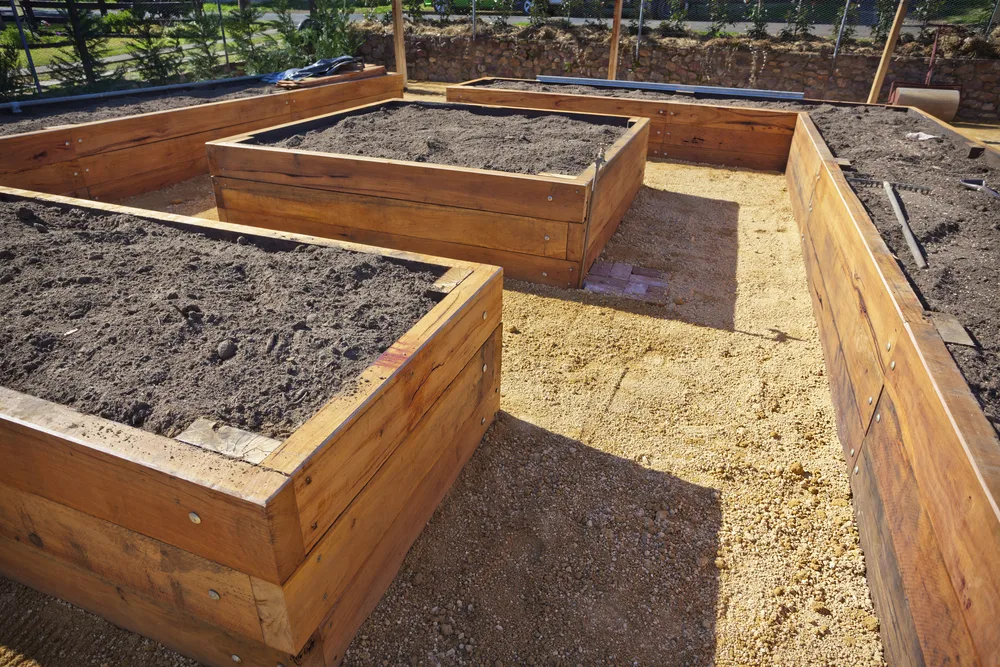
A garden is only as good as its soil.
Loam is the ideal soil type for growing fruits, vegetables, herbs, and flowers. Dark, rich, and crumbly, loam is roughly equal parts sand and silt with smaller amounts of clay.
Most plants love loamy soil because it retains nutrients and moisture more than sand, and has better drainage and airflow than clay or silt.
When your existing garden soil is made up of primarily clay or sand or silt, it needs to be fixed with soil conditioners and amendments. Working in plenty of organic matter, like compost, helps correct poor soil quality and turn bad soils into loamy soils.
Gardening in raised beds, though, gives total control over the quality and characteristics of the growing medium – allowing you to skip the effort of perfecting the native soil altogether.
Typically garden boxes are filled with a mix of high quality topsoil and compost. The blend can include optional additives like perlite, coconut coir, peat moss, or leaf mold. Starting out with rich and fertile soil will ensure your plants are healthy and productive from the very beginning.
Raised beds are also a good solution when battling soils that are rocky, too acidic or alkaline, or have been infested with soil-borne diseases and pests.
Urban gardeners who reside in cities with an industrial past can use raised beds to avoid potentially contaminating their crops with heavy metals and lead.
Even a nearby black walnut tree can wreak havoc on tomatoes, peppers, berries, and other jugalone-sensitive plants. Growing in raised beds protects these crops from the toxins produced by the tree’s far-reaching root system.
After the first year, maintain your soil’s health by rotating crops every season, planting green manures in autumn, and growing nitrogen fixers to boost fertility.
2. No Tilling
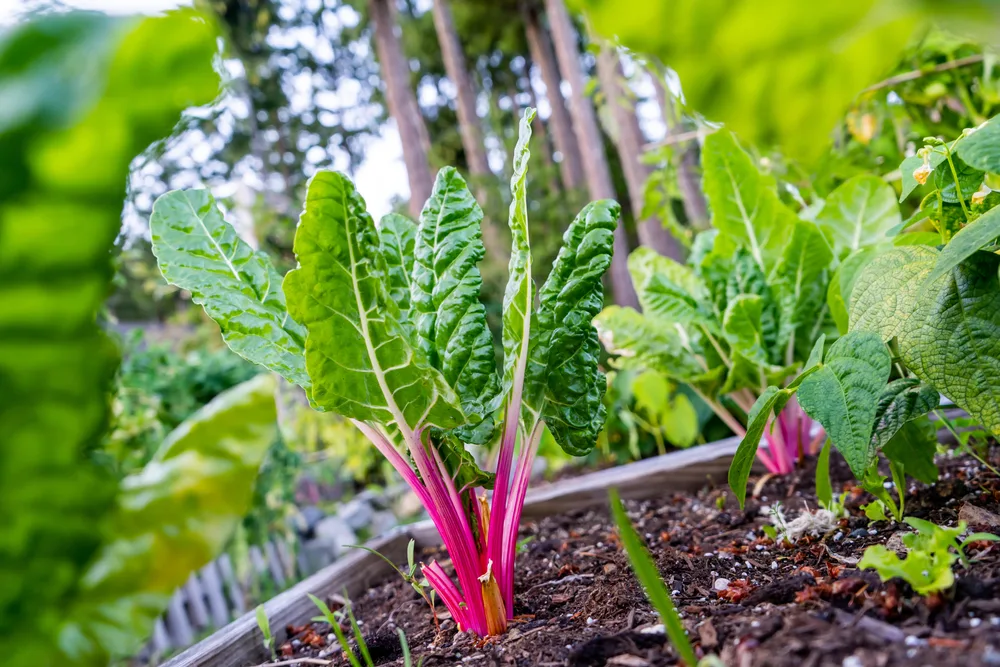
Traditional gardens require turning over the garden beds each year to break apart clumps and loosen up compacted soil. During the tilling process, soil amendments and fertilizers are added and mixed into the existing garden soil.
As well-intentioned as it may be, tilling up the garden can do more harm than good when it comes to building healthy soil.
By not digging up your garden, you maintain the integrity of the natural soil structure and all the beneficial microbes that reside within.
Gardening in raised beds is about as “no dig” as you can get.
After filling up the growing box initially with topsoil and compost, soil amendments can be added to the top few inches of soil in subsequent years.
There’s no need to mix it up either. Plant roots, earthworms, and other soil life will do the work of aerating and transporting nutrients through the bed.
3. Minimize Soil Compaction
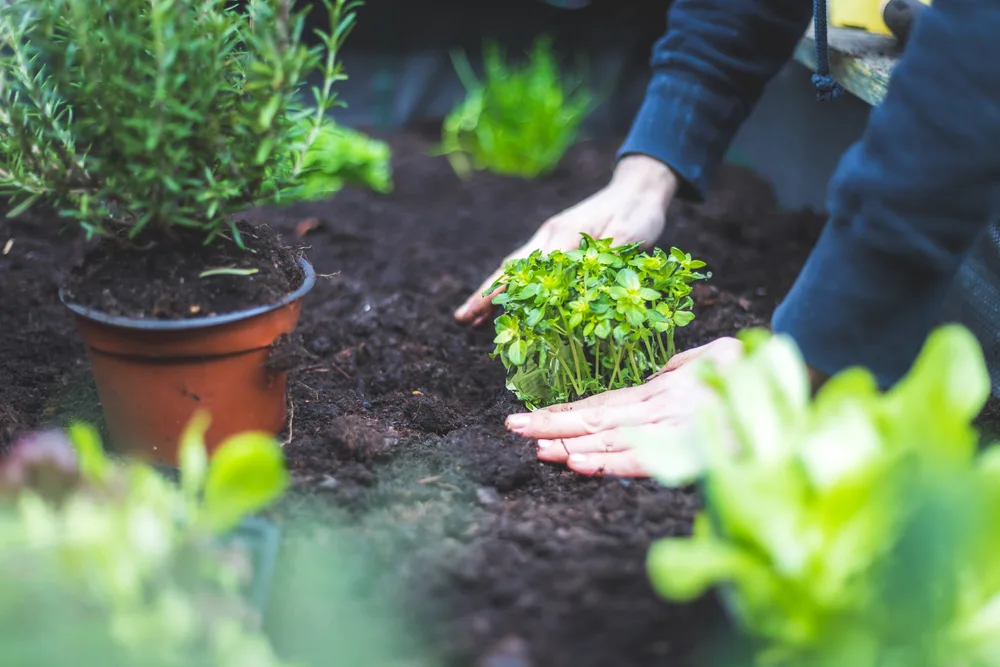
Plants grow best in soil that is light, loose, and fluffy.
Any misstep in the garden compresses the soil, eliminating the pores of air between soil particles.
Compacted soil is much denser and unable to hold water, air, nutrients, or much by the way of biological life. Affected plants will start to wilt, show nutrient deficiencies, or become very slow to grow.
Garden stepping stones and mulched pathways are fairly essential for in-ground gardens to prevent stepping all over the place and tamping down the soil. These footpaths, though, won’t defend against wandering children, roaming pets, or less surefooted gardeners.
Raised garden beds suffer from very little, if any, soil compaction. Since the garden is elevated above normal ground level, both soil and plants are way more protected from accidental foot traffic and clumsy missteps.
4. Better Drainage, Easier Irrigation
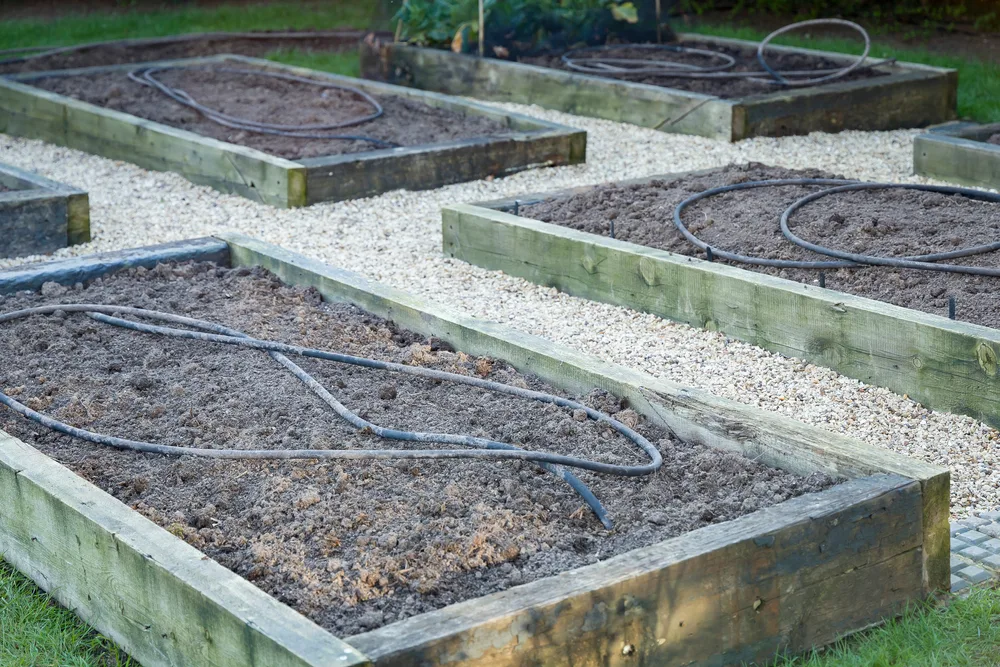
Raising up the soil to a foot or more above ground level greatly improves soil drainage.
Just like soil compaction, waterlogged soils prevent air from flowing into the tiny spaces between the granules. Starving the soil of a steady supply of air stresses out plants and stunts their growth.
In areas prone to heavy rains and flooding, raised bed gardening might be the only way to grow crops when you constantly struggle with waterlogged soil.
Bear in mind that because raised beds have better drainage, they will generally dry out more quickly than in-ground gardens do.
That said, keeping raised beds well watered can be a lot easier and less wasteful than irrigating gardens in the ground.
Instead of using sprinklers that saturate a wide area, drip irrigation systems are more efficient and can be set up in each bed. This helps conserve water since irrigation is targeted to each plant and is kept within the confines of the raised bed frame.
To fix soil that drains a bit too freely, add plenty of compost and organic matter to increase moisture retention.
5. Fewer Weeds to Pull
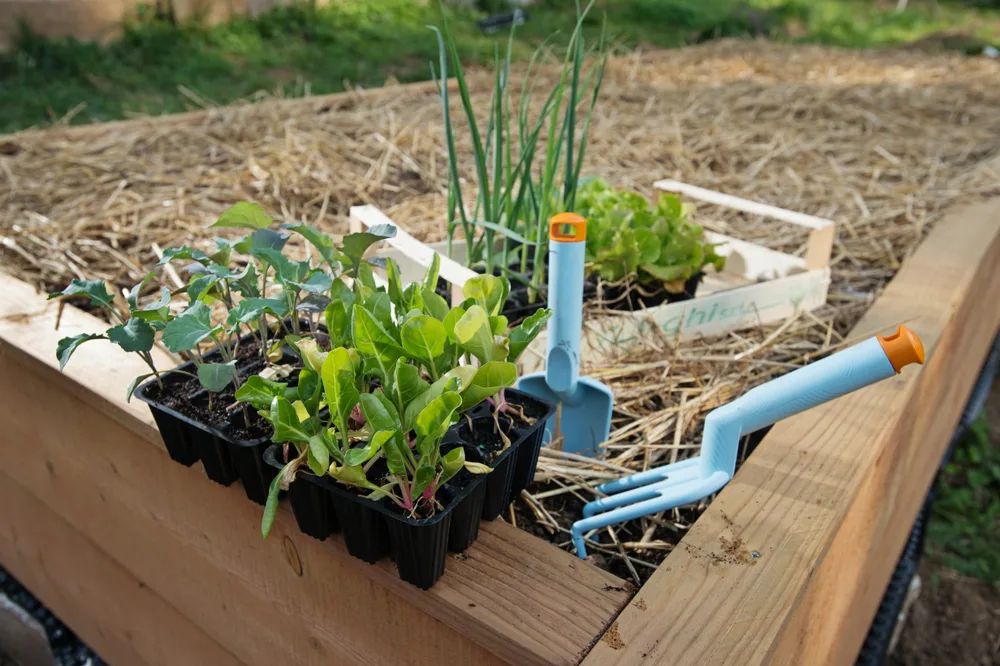
Weed seeds are opportunistic little things that can lie dormant in the soil for many, many years.
Broadcast and scattered by the mature weeds of yesteryear, nearly every square inch of garden soil contains the potential for weed life.
They spring into existence any time the soil is disturbed. Tilling and digging garden beds moves weed seeds closer to the surface and gives them access to sunlight.
Weeds are less of an issue in raised beds, since the soil rarely – if ever – becomes compacted. No soil compaction means there’s no need to till, keeping the soil surface intact and weed seeds inert.
When you need to dig in the soil to sow seeds or plant seedlings, try to keep soil disturbance to a minimum. Only dig as deep and wide as the root ball of the seedling, for example.
Apply a generous layer of garden mulch around the planting site to bury any newly exposed weed seeds and block out sunlight.
6. Extend the Growing Season
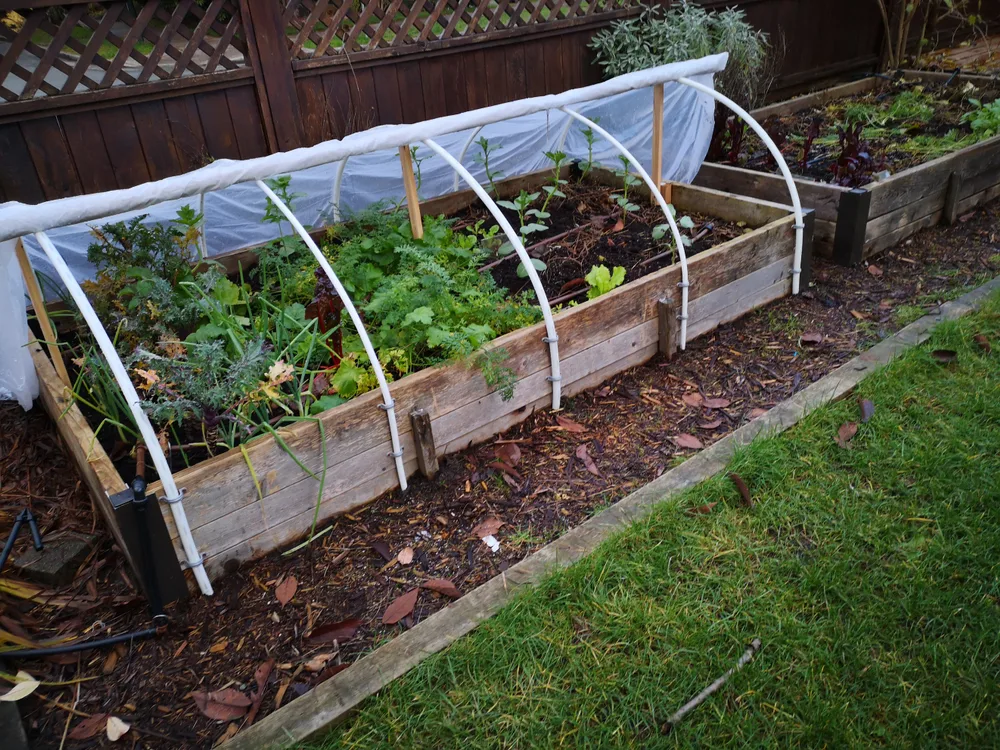
Raised beds can be worked earlier in spring that those at ground level.
This is largely due to their improved drainage. And because they drain better, the soil warms up faster, giving gardeners in cooler climates a good head start on the growing season.
In autumn, raised beds also offer better protection against frost. Hot air rises and cool air sinks, so plants grown in elevated soils benefit from slightly warmer above ground temperatures.
The bump in warmth can also mean you may be able to overwinter perennial crops that are slightly outside of your hardiness zone. Mulch well around these experiments to provide extra insulation against the cold.
7. More Productive Crops
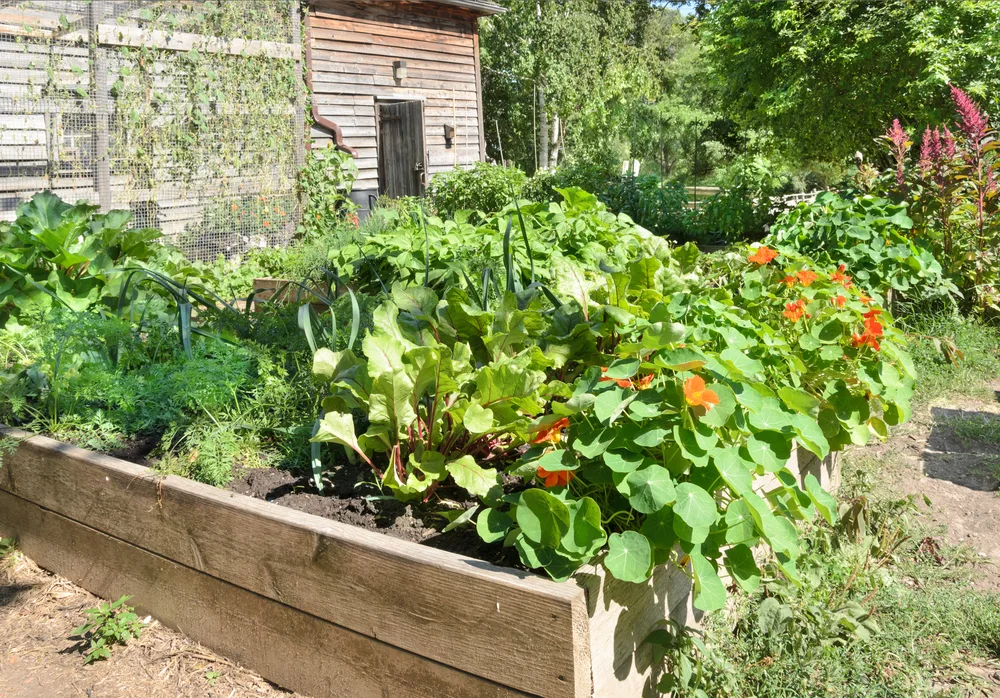
Raised garden beds create a near-perfect environment for growing food.
Healthy soil, good drainage, and less soil compaction is a winning combination for keeping plants happy. And with a longer growing season to boot, garden crops grown in raised beds are often high yielding and super productive.
A raised bed, 4 feet wide by 10 feet long, can provide 60 pounds of vegetables and fruits in a 4 to 6 month growing season. Building five beds this size will yield 300 pounds of produce, the average amount a single person will eat annually.
Unlike the spacing and rows needed for in-ground gardens, raised beds allow crops to be planted much closer together.
Intensive planting techniques – such as intercropping, square foot gardening, vertical gardening, and succession planting – can evoke a truly epic harvest in raised beds.
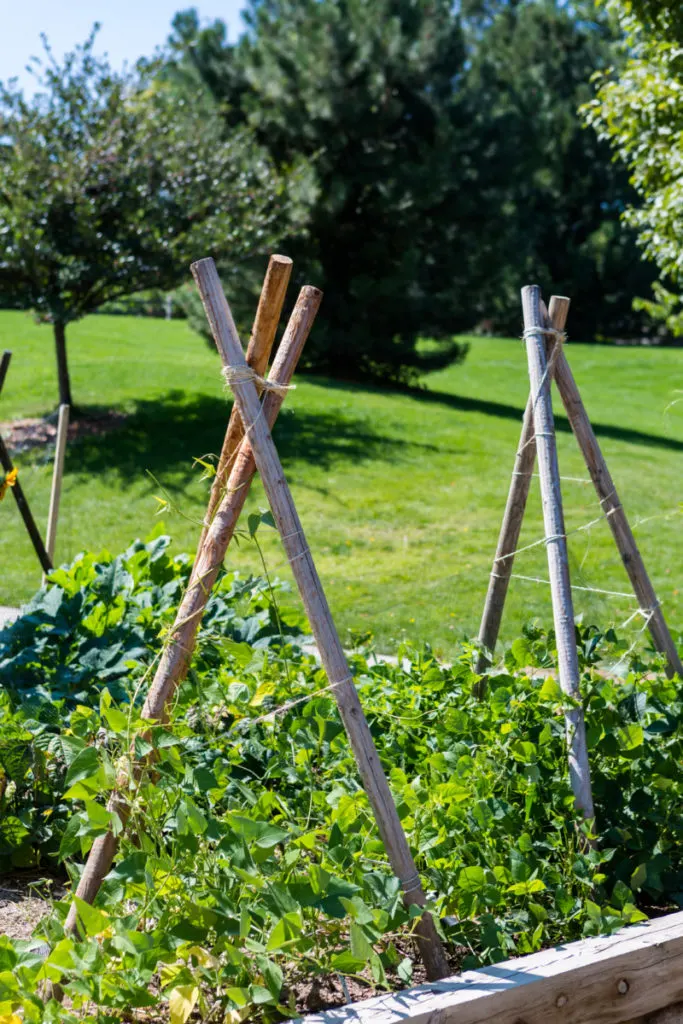
Because it uses the growing area more efficiently, raised beds are great for gardening in small or limited spaces.
8. Less Physically Demanding
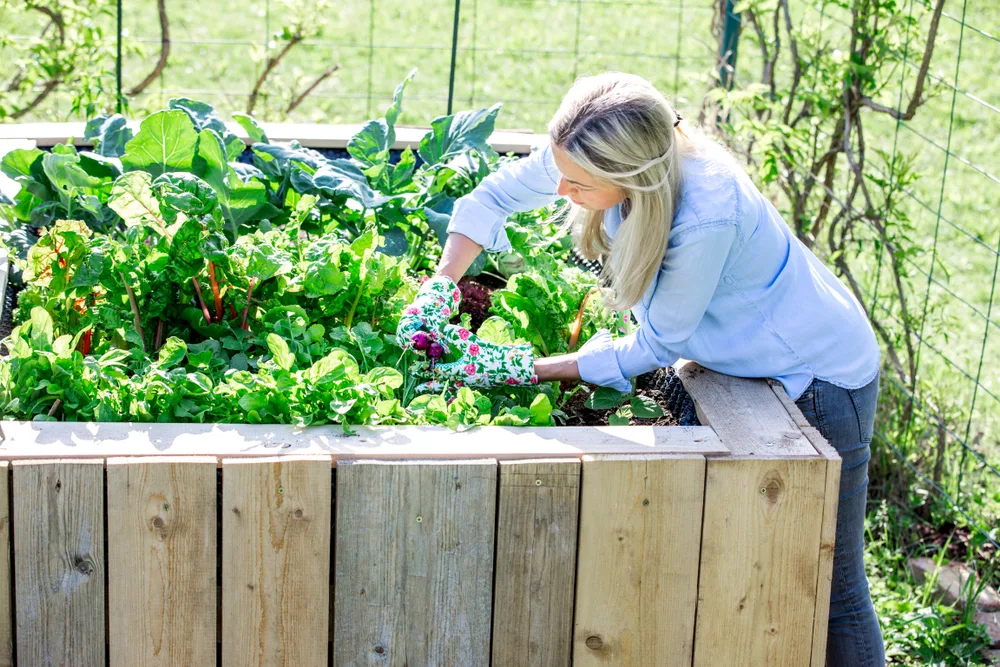
Gardening at ground level calls for a lot of hard work.
Every spring, gardeners must till the plot, mix in soil amendments, pull weeds, and then plant and sow. A sore back and knees shouldn’t be a rite of passage every year!
But with raised beds, gardeners can save themselves the seasonal ritual of aches and pains. Needing less maintenance overall, raised bed gardens practically eliminate the need to till, mix, and weed.
The walls of the raised bed can be customized to any comfortable height. Make it at least 12 inches tall to spare yourself a considerable amount of bending and kneeling. You can even construct a ledge around the bed’s perimeter so you can sit while you tend.
Raised beds can also be built with accessibility in mind. Elevated and keyhole-style beds allow the gardener to remain seated while they work.
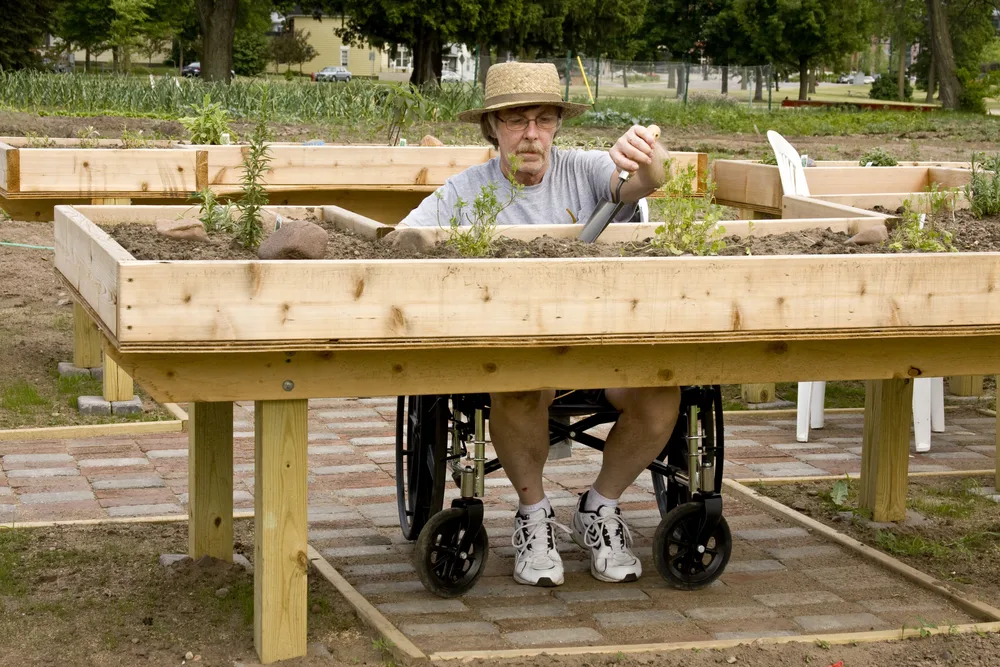
This can ensure the joy of gardening is possible for those who live with physical limitations.
9. Adds Visual Appeal
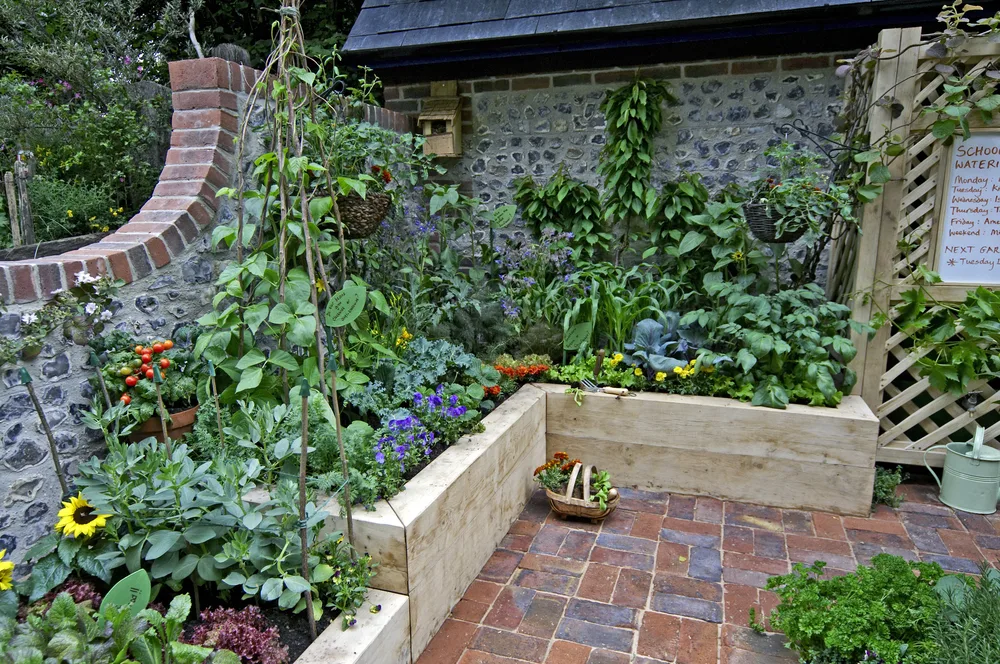
A well designed layout of raised beds can make the backyard garden look absolutely stunning.
Raised beds can be constructed into any size and shape. Square, rectangular, L and U shaped, circular, triangular, keyhole, and multi-tiered are examples of some of the forms raised beds can take.
They can be easily customized for gardens large and small. Take a look at these garden layout ideas to inspire your design.
And don’t forget that vegetable gardens can be made into beautiful spaces too. Instead of rows upon rows, create a more inviting and restorative place with meandering pathways, sitting areas, and vine-covered arbors. Use the principles of potager gardens to make breathtaking focal points alongside your flourishing crops.
Rotating your plants each year means the garden space never becomes stale and boring. Keep it fresh by redesigning the look for each new season.
10. Great for Beginners
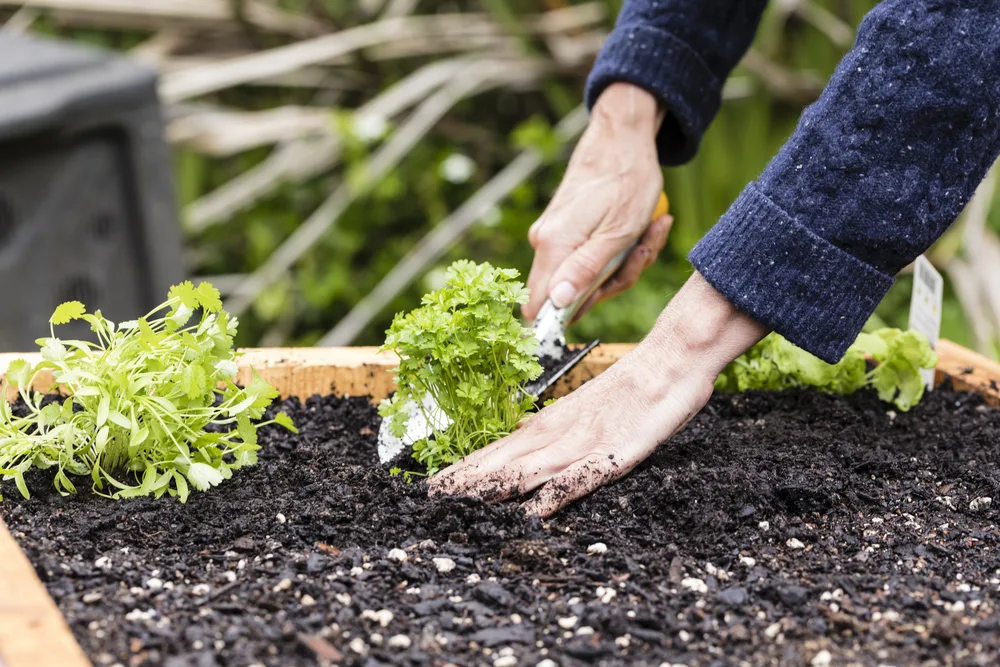
As you can see, gardening in raised beds removes many of the barriers to success that typically accompany traditional gardens.
With no need to test and amend native garden soils, dig up and till the land, battle endlessly with weeds, or fix issues like poor drainage, raised garden beds are a wonderful introduction to the world of horticulture.
The path to victory is incredibly straightforward too: build a grow box, fill it with soil, add compost, plant seeds, and keep it watered. Following these simple steps practically guarantees your crops will grow…
Unless of course you make any of the below mistakes…
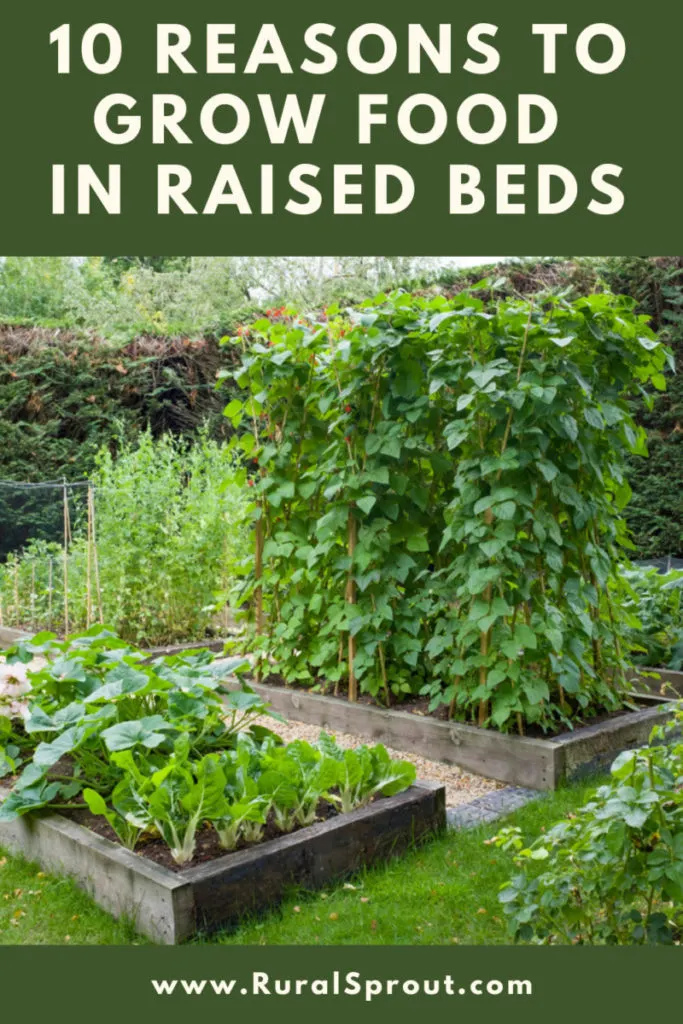

Get the famous Rural Sprout newsletter delivered to your inbox.
Including Sunday musings from our editor, Tracey, as well as “What’s Up Wednesday” our roundup of what’s in season and new article updates and alerts.


